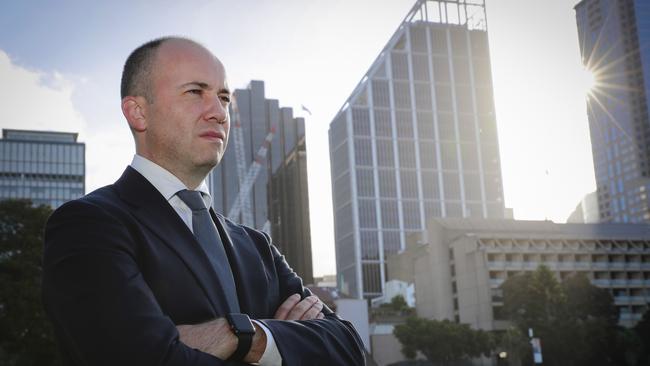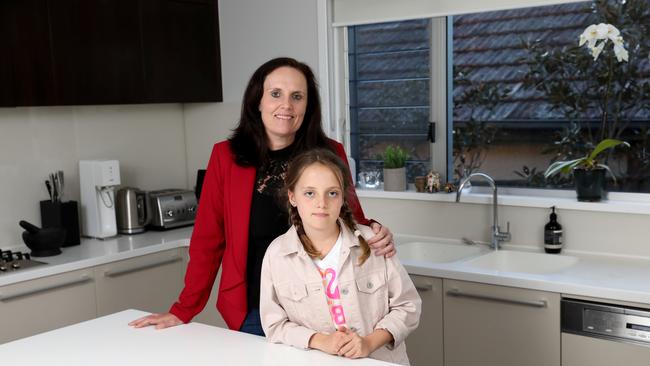Power and water bills set to rise to cover climate change initiatives
The NSW Government has demanded energy companies this year hand over $276 million for a Climate Change Fund, of which a quarter can be slugged onto household customers’ bills. The Fund gives grants to save koalas and hands out cheap TVs.

NSW
Don't miss out on the headlines from NSW. Followed categories will be added to My News.
NSW families have been gouged by higher electricity bills in order to pay millions to a climate change “slush fund” which doles out grants to save koalas, give pensioners cheap TVs and “increase public awareness of climate change”.
The state’s three main “poles and wires” electricity distributors — Ausgrid, Endeavour Energy and Essential Energy — as well as Sydney Water — have just been told by the Berejiklian Government they must hand over $276 million for the latest annual levy to the NSW Climate Change Fund.
Companies — and their customers — have contributed more than $3.25 billion since the Fund started in 2007. In its first year the Fund collected $82.6 million, but within seven years it had jumped to $317.3 million.
While the government says the companies are only allowed to pass 25 per cent of the cost to residential consumers, it cannot explain how this rule is policed and critics have branded it an “unconscionable electricity tax”.
At the same time the Federal Government's Renewable Energy Target scheme added an extra five per cent — an estimated $68.50 — to the average electricity bill nationally last year.
More than half of this was due to its large scale plan to create supply and demand for renewables, however a report by the Clean Energy Regulator found the cost of electricity was expected to drop in the next two years for consumers due to this investment.
An Essential Energy spokeswoman said it was “transparent and vigilant” about revenue collection for the state government Climate Change Fund, a process that is reviewed by the Australian Energy Regulator which ensures the company collects “no more or no less than required” by law.
Endeavour Energy said the Fund made up about 9 per cent of an average residential customer’s network bill, while an Ausgrid spokeswoman said the company does not directly bill any customers, but incorporates the cost of the Fund into its annual price changes passed through retailers.

MORE NEWS
Aussie face behind world’s deadly new drugs hub
Sydney club denies entry policy discriminates against race
Cocaine trafficker gets 13 years’ jail
A Sydney Water spokesman said contributions made to the Fund in 2019-20 have not been passed onto customers at the request of its executive.
“Sydney Water has again not asked to recover the Climate Change Fund contributions from customers in its next pricing proposal for 2020-24,” the spokesman said.
The Fund has divided Coalition supporters, with the NSW National Party voting at its annual conference in June to abolish the agency.
But NSW Nationals leader John Barilaro would not say if he also wanted to axe it.
His spokesman said the motions carried were “policy positions of the National Party, not NSW Government policy.”
NSW Energy and Environment Minister Matt Kean said the environment department “actively monitors” how the electricity distributors “recover charges” from customers, but did not answer how this was achieved.
“Over the period 2017 to 2022, the Climate Change Fund will have an average cost of around $22 per annum for householders, outweighed by savings of around $60 per annum on their energy bills.”

“The NSW Government is committed to implementing programs that help bring down electricity prices for households and businesses across NSW, including those funded through the CCF.”
How working families who do not hold pensioner cards achieved these “average” savings as a result of grants to the environmental fund was not explained by his office.
Over the past 12 months the agency spent $2.2 million on administration running its grant programs.
Grants include $49.9 million for energy saving upgrades to public housing and discounts for pensioners to buy 14,800 fridges and TVs. It also included $25 million on bushfire hazard reduction and $2 million on air quality monitoring.
Another grant was $6.3 million to five Port Macquarie property owners “in perpetuity” every year so the landowners can improve the quality of their vegetation for any native koalas living there. And $1.4 million was spent rehabilitating land in the state’s National Parks.
In 2018 Premier Gladys Berejiklian stepped in to overhaul how money collected by the tax on electricity bills was used to redirect it to more cost of living relief.
This included $72 million to make households more energy efficient.
The Australian Taxpayers’ Alliance says driving up power bills to pay for green grants while senior citizens and families shivered through winter and struggled to pay the bills was “appalling”.

“Essentially it punishes the middle class and less well off,” ATA policy director Satya Marar said.
“People in wealthy electorates like Warringah and Wentworth can afford to pay much higher power bills and are happy to do it.
“But people in western Sydney, rural NSW are suffering. Pensioners are turning off the heat in winter, and families are suffering, it is appalling.
Upper House MP Mark Latham estimates the climate levy slugs residential and business owners an average $80 a year — to fund unrelated “general environmental” projects, rather than cutting greenhouse gas emissions as mandated by the agency’s charter.
“It’s become a giant slush fund at the expense of electricity consumers,” he said. “The $1.3 billion it has stockpiled in reserve should be given back to electricity customers to bring down costs.
“Take an axe to it. There are only so many gains that can be made in the area of energy saving household appliances, that can’t continue forever.”
The climate change agency has a goal of achieving net zero emissions by 2050, but stopped reporting the yearly total reduction achieved in recent years.
Institute of Public Affairs policy director Gideon Rozner said “putting over a quarter of a billion dollars into yet another gimmicky green fund is a gratuitous waste of money”.
“It is telling that the government has stopped reporting the exact amount of emissions cut by the scheme,” he said.
“How on earth is the NSW Climate Change Fund supposed to make any difference whatsoever to the earth’s climate?”
The amounts to be paid over the next 12 months include $134 million from Ausgrid, $86 million from Endeavour Energy, $56 million from Essential Energy and $740,000 from Sydney Water.
The office of Ms Berejiklian was contacted for comment.
Originally published as Power and water bills set to rise to cover climate change initiatives


